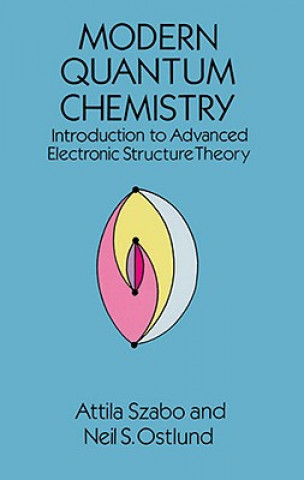
Kód: 04086654
Modern Quantum Chemistry
Autor Neil S Ostlund
Preface to Revised edition Preface 1. Mathematical Review 1.1 Linear Algebra 1.1.1 Three-dimensional vector algebra 1.1.2 Matrices 1.1.3 Determinants 1.1.4 N-Dimensional Complex Vector spaces 1.1.5 Change o ... celý popis
- Jazyk:
 Angličtina
Angličtina - Väzba: Brožovaná
- Počet strán: 480
Nakladateľ: Dover Publications Inc., 1996
- Viac informácií o knihe

36.59 €

Skladom v malom množstve
Odosielame do 24 hodín
Potrebujete viac kusov?Ak máte záujem o viac kusov, preverte, prosím, najprv dostupnosť titulu na našej zákazníckej podpore.
Pridať medzi želanie
Mohlo by sa vám tiež páčiť
-
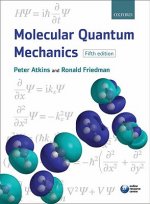
Molecular Quantum Mechanics
92.04 € -
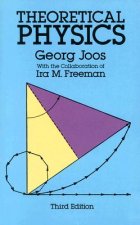
Theoretical Physics
38.30 € -15 % -
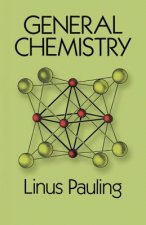
General Chemistry
34.18 € -15 % -
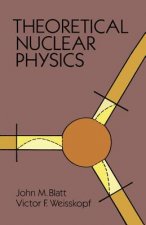
Theoretical Nuclear Physics
31.58 € -23 % -
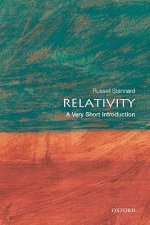
Relativity: A Very Short Introduction
9.92 € -22 % -
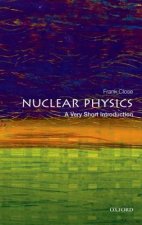
Nuclear Physics: A Very Short Introduction
9.92 € -22 % -
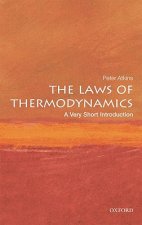
Laws of Thermodynamics: A Very Short Introduction
9.92 € -22 % -
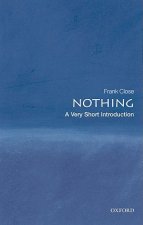
Nothing: A Very Short Introduction
9.92 € -22 % -

Plants That Kill
27.57 € -15 % -

Harry Potter Crochet Wizardry
24.26 € -13 % -

Mathematics for Quantum Chemistry
15.33 € -

Christmas Carol and Other Christmas Writings
17.14 € -20 % -
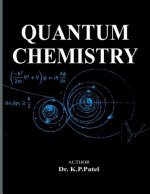
Quantum Chemistry
17.66 € -

Oxford Resources for IB DP Chemistry: Study Guide (Paperback)
49.73 € -

Major Works of Charles Dickens (Boxed Set)
127.74 € -

Fruits Basket Another, Vol. 1
13.53 € -15 % -

Six Not-So-Easy Pieces
14.43 € -20 % -
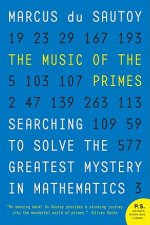
The Music of the Primes
19.64 € -

Berserk Deluxe Volume 12
52.03 € -

New Plant Parent
19.64 € -29 % -

The Feynman Lectures on Physics Set
183.30 € -19 % -

Recovering from Emotionally Immature Parents
35.49 € -

Python Crash Course
36.09 € -6 % -

Renoir. 40th Ed.
25.96 € -14 % -

House of Earth and Blood
23.25 € -

Thank U, Next
39.40 € -

Babel
15.63 € -19 % -

Bloodborne, 1 - 3 Boxed set
46.02 € -7 % -

Laboratory Teaching; Or, Progressive Exercises In Practical Chemistry
18.74 € -

The Subtle Art of Not Giving A F*ck
15.63 € -19 % -

Heartstopper Volume 4
12.32 € -22 % -

Attack On Titan: No Regrets Complete Color Edition
24.46 € -20 % -

Financial Markets and Institutions, Global Edition
93.25 € -

Alice in Chains: The Untold Story
18.14 € -12 % -

Starport
21.45 € -

The Summer Palace and Other Stories: A Captive Prince Short Story Collection
10.02 € -

The Complete Tales of H.P. Lovecraft
22.35 € -19 % -
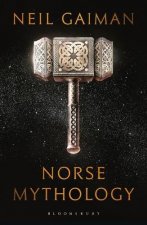
Norse Mythology
9.32 € -21 % -

Husband Material
9.22 € -13 % -

Seven Deaths of Evelyn Hardcastle
10.22 € -19 % -

Morpho
26.86 € -23 % -

The Hobbit and the Lord of the Rings: Deluxe Pocket Boxed Set
59.35 € -

Crocodiles & Alligators
10.72 € -6 % -

Chemistry for the IB Diploma Workbook with Digital Access (2 Years)
30.78 € -

Secret Teachings of Plants
16.94 € -14 % -

Coloring Book Monet
9.72 € -21 % -
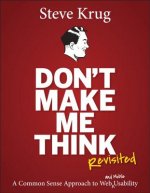
Don't Make Me Think, Revisited
40.60 € -10 % -

Cutting Edge Starter New Edition Workbook without Key
30.57 € -

Yoga Sutras of Patanjali
16.84 € -

The Metamorphosis and Other Stories
6.61 € -16 % -

First Thousand Words in Arabic
8.81 € -23 % -

Harry Potter and the Philosopher's Stone
8.81 € -23 % -

It ends with us
9.01 € -15 % -

Cracking the Coding Interview
43.21 € -

Elantris
11.42 € -19 % -

One Piece (Omnibus Edition), Vol. 3
15.93 € -21 % -

Cashvertising
18.84 € -

Level 5: The Brethren
11.12 € -

The Story of Art
42.41 € -15 % -

Moon's a Balloon
12.02 € -22 % -

In Order To Live
12.02 € -22 % -
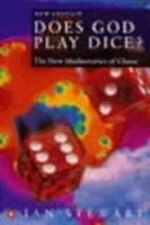
Does God Play Dice?
16.23 € -23 % -

Harry Potter : la magie du crochet
33.08 € -

Błąd Kartezjusza. Emocje, rozum i ludzki mózg
10.92 € -28 % -

Mandaly archandělů
6.41 € -18 % -

Hipotezy szczęścia
11.12 € -20 % -

Iron Man 2. Blu-ray
12.62 € -

Holzer Stofftelegramme - Kauffrau/-mann für Büromanagement. Aufgabenband. Baden-Württemberg
24.56 € -

Jak svět doopravdy funguje
15.83 € -19 % -

Dreamers Are Waiting
25.46 € -

Puzzle 500 Puzzlove rodzinne Ryby i zwierzęta wodne CzuCzu
11.22 € -26 % -
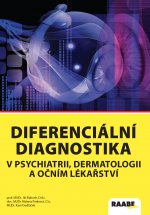
Diferenciální diagnostika v psychiatrii, dermatologii a očním lékařství
17.64 € -20 % -

Poznávej ptáčky
9.22 € -6 % -
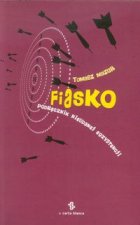
Fiasko
8.11 € -18 % -

Goju ryu Karate Kata I.
14.73 € -

Rybí krev
11.32 € -13 % -

Černá ovce facebooku
12.02 € -13 % -

Železný půlměsíc
12.12 € -12 % -

Rehabilitace kognitivních funkcí v ošetřovatelské praxi
2.80 € -20 % -
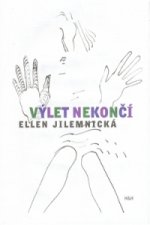
Výlet nekončí
6.11 € -14 % -

Ida konie i reszta swiata
6.11 € -18 % -

Čaje z liečivých rastlín
7.51 € -23 % -
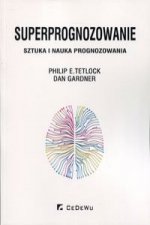
Superprognozowanie
16.64 € -5 % -

Síť snů
10.92 € -13 %
Darujte túto knihu ešte dnes
- Objednajte knihu a vyberte Zaslať ako darček.
- Obratom obdržíte darovací poukaz na knihu, ktorý môžete ihneď odovzdať obdarovanému.
- Knihu zašleme na adresu obdarovaného, o nič sa nestaráte.
Viac informácií o knihe Modern Quantum Chemistry
Nákupom získate 92 bodov
 Anotácia knihy
Anotácia knihy
Preface to Revised edition Preface 1. Mathematical Review 1.1 Linear Algebra 1.1.1 Three-dimensional vector algebra 1.1.2 Matrices 1.1.3 Determinants 1.1.4 N-Dimensional Complex Vector spaces 1.1.5 Change of Basis 1.1.6 The Eigenvalue Problem 1.1.7 Functions of Matrices 1.2 Orthogonal functions, Eigenfunctions, and Operators 1.3 The Variation Method 1.3.1 The Variation principle 1.3.2 The Linear Variational Problem Notes, Further Reading 2. Many Electron Wave functions and operators 2.1 The Electronic Problem 2.1.1 Atomic Units 2.1.2 The Born-Oppenheimer Approximation 2.1.3 The Antisymmetry or Pauli Exclusion Principle 2.2 Orbitals, Slater Determinants, and Basis functions 2.2.1 Spin Orbitals and Spatial Orbitals 2.2.2 Hartree Products 2.2.3 Slater Determinants 2.2.4 The Hartree-Fock Approximation 2.2.5 The Minimal Basis H subscript 2 Model 2.2.6 Excited Determinants 2.2.7 Form of the Exact Wave function and Configuration Interaction 2.3 Operators and Matrix Elements 2.3.1 Minimal Basis H subscript 2 matrix Elements 2.3.2 Notations for One- and Two-Electron Integrals 2.3.3 General Rules for Matrix Elements 2.3.4 Derivation of the Rules for Matrix Elements 2.3.5 Transition from Spin Orbitals to Spatial Orbitals 2.3.6 Coulomb and Exchange Integrals 2.3.7 Pseudo-Classical interpretation of Determinantal Energies 2.4 Second Quantization 2.4.1 Creation and annihilation Operators and Their Anticommutation Relations 2.4.2 Second-Quantized Operators and Their Matrix Elements 2.5 Spin-Adapted Configurations 2.5.1 Spin Operators 2.5.2 Restricted Determinants and Spin-Adapted Configurations 2.5.3 Unrestricted Determinants Notes, Further Reading 3. The Hartree-Fock Approximation 3.1 The Hartree-Fock Equations 3.1.1 The Coulomb and Exchange Operators 3.1.2 The Fock Operator 3.2 Derivation of the Hartree-Fock Equations 3.2.1 Functional Variation 3.2.2 Minimization of the Energy of a Single Determinant 3.2.3 The Canonical Hartree-Fock Equations 3.3 Interpretation of Solutions to the Hartree-Fock Equations 3.3.1 Orbital energies and Koopmans' Theorem 3.3.2 Brillouin's Theorem 3.3.3 The Hartree-Fock Hamiltonian 3.4 Restricted Closed-Shell hartree-Fock: The Roothaan Equations 3.4.1 Closed-Shell Hartree-Fock: Restricted Spin Orbitals 3.4.2 Introduction of a Basis: The Roothaan Equations 3.4.3 The Charge Density 3.4.4 Expression for the Fock Matrix 3.4.5 Orthogonalization of the Basis 3.4.6 The SCF Procedure 3.4.7 Expectation Values and Population Analysis 3.5 Model Calculations on H subscript 2 and HeH superscript + 3.5.1 The 1s Minimal STO-3G Basis Set 3.5.2 STO-3G H subscript 2 3.5.3 An SCF Calculation on STO-3G HeH superscript + 3.6 Polyatomic Basis Sets 3.6.1 Contracted Gaussian functions 3.6.2 Minimal Basis Sets: STO-3G 3.6.3 Double Zeta Basis Sets: 4-31G 3.6.4 Polarized Basis Sets: 6-31G and 6-31G 3.7 Some Illustrative Closed-Shell Calculations 3.7.1 Total Energies 3.7.2 Ionization Potentials 3.7.3 Equilibrium Geometries 3.7.4 Population Analysis and Dipole Moments 3.8 Unrestricted Open-Shell Hartree-Fock: The Pople-Nesbet Equations 3.8.1 Open-Shell Hartree-Fock: Unrestricted Spin Orbitals 3.8.2 Introduction of a Basis: The Pople-Nesbet Equations 3.8.3 Unrestricted Density Matrices 3.8.4 Expression for the Fock Matrices 3.8.5 Solution of the Unrestricted SCF Equations 3.8.6 Illustrative Unrestricted Calculations 3.8.7 The Dissociation Problem and its Unrestricted Solution Notes, Further Reading 4. Configuration Interaction 4.1 Multiconfigurational Wave Functions and the Structure of the Full CI Matrix 4.1.1 Intermediate Normalization and an Expression for the Correlation Energy 4.2 Doubly Excited CI 4.3 Some Illustrative Calculations 4.4 Natural Orbitals and the One-Particle Reduced Density Matrix 4.5 The Multiconfiguration Self-Consistent Field (MCSCF) and Generalized Valence Bond (GVB) Methods 4.6 Truncated CI and the Size-Consistency Problem Notes, Further Reading 5. Pair and Coupled-Pair Theories 5.1 The Independent Electron Pair Approximation (IEPA) 5.1.1 Invariance under Unitary Transformations: an example 5.1.2 Some Illustrative Calculations 5.2 Coupled-Pair Theories 5.2.1 The Coupled Cluster Approximation (CCA) 5.2.2 The Cluster Expansion of the Wave Function 5.2.3 Linear CCA and the Coupled Electron Pair Approximation (CEPA) 5.2.4 Some Illustrative Calculations 5.3 Many-Electron Theories with Single Particle Hamiltonians 5.3.1 The Relaxation Energy via CI, IEPA, CCA, and CEPA 5.3.2 The Resonance Energy of Polyenes in Hückel Theory Notes, Further Reading 6. Many-Body Perturbation Theory 6.1 Rayleigh-Schrödinger (RS) Perturbation Theory 6.2 Diagrammatic Representation of RS Perturbation Theory 6.2.1 Diagrammatic Perturbation Theory for 2 States 6.2.2 Diagrammatic Perturbation Theory for N States 6.2.3 Summation of Diagrams 6.3 Orbital Perturbation Theory: One-Particle Perturbations 6.4 Diagrammatic Representation of Orbital Perturbation Theory 6.5 Perturbation Expansion of the Correlation Energy 6.6 The N-Dependence of the RS Perturbation Expansion 6.7 Diagrammatic Representation of the Perturbation Expansion of the Correlation Energy 6.7.1 Hugenholtz Diagrams 6.7.2 Goldstone Diagrams 6.7.3 Summation of Diagrams 6.7.4 What Is the Linked Cluster Theorem? 6.8 Some Illustrative Calculations Notes, Further Reading 7. The One-particle Many-Body Green's Function 7.1 Green's Functions in single Particle Systems 7.2 The One-Particle Many-Body Green's Function 7.2.1 The Self-Energy 7.2.2 The solution of the Dyson Equation 7.3 Application of the formalism to H subscript 2 and HeH superscript + 7.4 Perturbation Theory and the Green's Function Method 7.5 Some Illustrative Calculations Notes, Further Reading Appendix A. Integral Evaluation with 1s Primitive Gaussians Appendix B. Two-Electron Self-Consistent-Field Program Appendix C. Analytic Derivative methods and Geometry Optimization Appendix D. Molecular Integrals for H subscript 2 as a Function of Bond Length Index
 Parametre knihy
Parametre knihy
Zaradenie knihy Knihy po anglicky Mathematics & science Chemistry Physical chemistry
36.59 €
- Celý názov: Modern Quantum Chemistry
- Autor: Neil S Ostlund
- Jazyk:
 Angličtina
Angličtina - Väzba: Brožovaná
- Počet strán: 480
- EAN: 9780486691862
- ISBN: 0486691861
- ID: 04086654
- Nakladateľ: Dover Publications Inc.
- Hmotnosť: 584 g
- Rozmery: 213 × 142 × 25 mm
- Dátum vydania: 01. January 1996
Obľúbené z iného súdka
-

Molymod MMS-072
28.37 € -

Schaum's Outline of Physical Chemistry
32.48 € -12 % -

Schaum's Outline of Thermodynamics with Chemical Application
29.07 € -

Principles and Problems in Physical Chemistry for Biochemists
83.92 € -
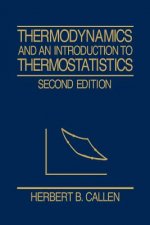
Thermodynamics and an Introduction to Thermostatistics 2e (WSE)
310.95 € -
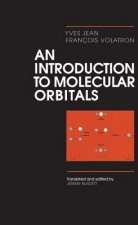
Introduction to Molecular Orbitals
214.68 € -
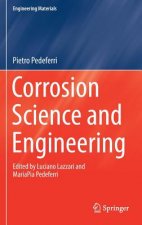
Corrosion Science and Engineering
163.84 € -
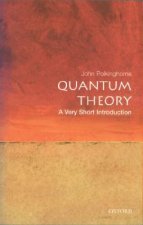
Quantum Theory: A Very Short Introduction
9.92 € -22 % -

Catalysis - An Integrated Textbook for Students
108.19 € -
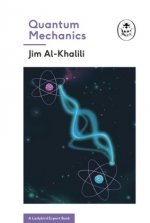
Quantum Mechanics (A Ladybird Expert Book)
8.81 € -23 % -
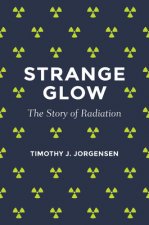
Strange Glow
21.05 € -3 % -

Elements of Physical Chemistry
66.27 € -1 % -

Molecular Driving Forces
186.61 € -

Student Solutions Manual to Accompany Atkins' Physical Chemistry 11th Edition
80.71 € -
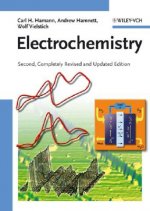
Electrochemistry
99.47 € -2 % -
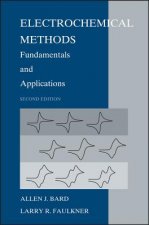
Electrochemical Methods
360.29 € -

History and Science of the Manhattan Project
127.04 € -
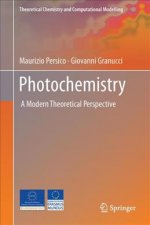
Photochemistry
95.55 € -8 % -
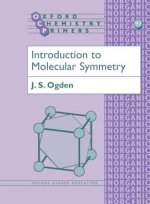
Introduction to Molecular Symmetry
38.20 € -

Solutions Manual to accompany Elements of Physical Chemistry 7e
49.93 € -6 % -
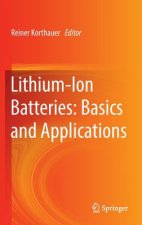
Lithium-Ion Batteries: Basics and Applications
198.24 € -
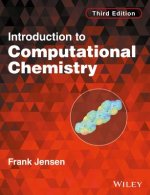
Introduction to Computational Chemistry, 3e
97.96 € -3 % -
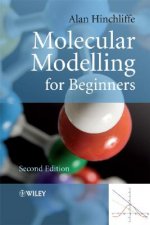
Molecular Modelling for Beginners 2e
102.67 € -

Electrochemistry
41.81 € -
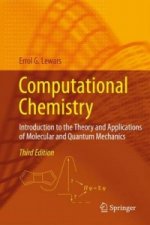
Computational Chemistry
158.53 € -

Perfumes
114.81 € -

Chemical Formulation
42.61 € -

Physical Chemistry
172.17 € -
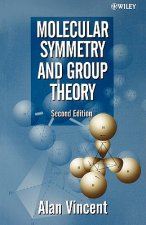
Molecular Symmetry & Group Theory - A Programmed Introduction to Chemical Applications 2e
44.51 € -3 % -
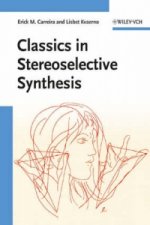
Classics in Stereoselective Synthesis
108.19 € -
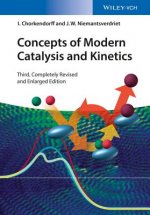
Concepts of Modern Catalysis and Kinetics 3e
110.09 € -3 % -

Electrochemistry in Ionic Liquids
135.56 € -

Stereochemistry
27.37 € -
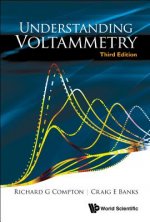
Understanding Voltammetry (Third Edition)
77.50 € -

History and Science of the Manhattan Project
55.34 € -

Understanding Advanced Chemistry Through Problem Solving: The Learner's Approach - Volume 2
32.88 € -
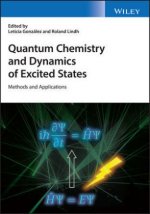
Quantum Chemistry and Dynamics of Excited States - Methods and Applications
339.53 € -

Interfacial Electrochemistry
97.86 € -

Understanding Advanced Chemistry Through Problem Solving: The Learner's Approach - Volume 1
33.38 € -
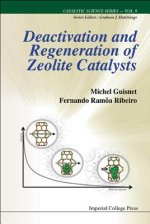
Deactivation And Regeneration Of Zeolite Catalysts
121.83 € -
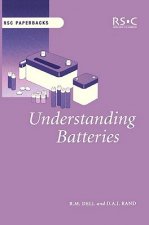
Understanding Batteries
49.63 € -

Stereochemistry - Workbook
56.45 € -
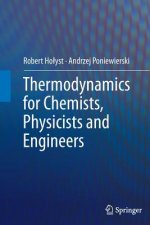
Thermodynamics for Chemists, Physicists and Engineers
84.12 € -
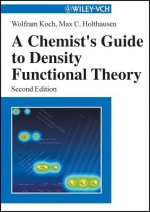
Chemist's Guide to Density Functional Theory 2e
121.53 € -
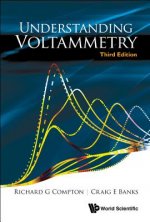
Understanding Voltammetry (Third Edition)
163.54 € -
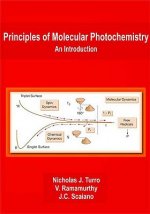
Principles of Molecular Photochemistry: An Introduction
170.46 € -
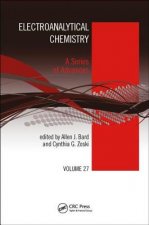
Electroanalytical Chemistry
212.88 € -
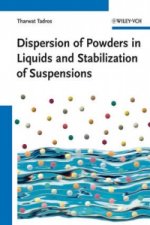
Dispersion of Powders - in Liquids and Stabilization of Suspensions
213.78 € -

Solid State Electrochemistry
438.60 €
Osobný odber Bratislava a 2642 dalších
Copyright ©2008-24 najlacnejsie-knihy.sk Všetky práva vyhradenéSúkromieCookies


 21 miliónov titulov
21 miliónov titulov Vrátenie do mesiaca
Vrátenie do mesiaca 02/210 210 99 (8-15.30h)
02/210 210 99 (8-15.30h)